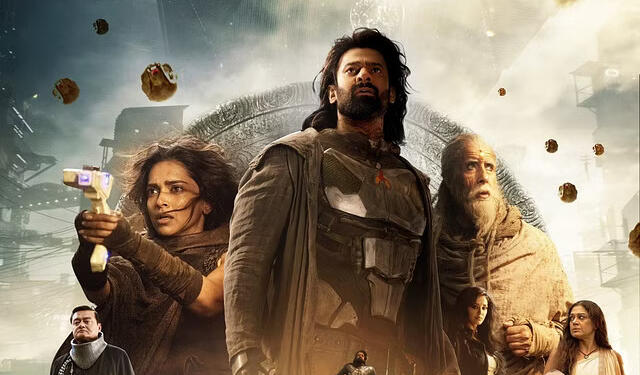‘Kalki 2898 AD’ is considered a revolution in the Indian film industry. The film is based on a future dictatorship where rebels are fighting against oppressive tyrants. This theme has been used many times in Hollywood, but this film also incorporates Hindu mythological elements, especially those related to the Mahabharata and the arrival of Kalki in Kaliyuga.
Central Character: Ashwatthama
The central character of the film is Ashwatthama, son of Guru Drona, who is cursed with immortality and eternal wandering. The story is presented in an exciting way. It has some major successes, but overall the film fails to achieve its goals.
Lack of a Grand Climax
The film lacks a grand climax. It neither leads viewers to a grand ending nor suggests the possibility of a suspenseful second part, as the director intended. Instead, the director has tried to include grand scenes from every successful Hollywood movie in ‘Kalki’. As a result, the special effects have a weak impact on the audience.
Influence of Hollywood Films
The influence of several Hollywood films can be clearly seen in the movie. For example, the use of special effects in ‘Close Encounters of the Third Kind’ (1977) can be seen in ‘Kalki’ as well. Similarly, the mother tree theme from ‘Avatar’ (2009) has been used here, but it’s merely an irrelevant presence.
Character Development
Character development in the film also relies on Hollywood. The character of ‘Bhairava’ is inspired by Han Solo from ‘Star Wars’ (1977). The AI friend in ‘Kalki’ also reminds of R2D2 and C3PO. The clear influence of the Mad Max series can also be seen in the film. The Shambhala of ‘Kalki’ cannot be compared without Zion from ‘Matrix’ (1999).
Lack of Indian Elements
What is truly Indian in the film? It’s hard to tell. Perhaps it presents our epics and mythological concepts to modern youth. Even the idea of a demi-god who is the supremo of the ‘Complex’ is presented in the film, which is more than the devil-god dichotomy. The former is an unchangeable category, while the latter is an interrelated dichotomy with gray areas.
Performances
Amitabh Bachchan’s performance, which is more digitally generated, energizes the film. Deepika Padukone looks more doll-like than lively. Shobhana has acted with her entire being, but unfortunately, her character, which had a lot of potential, was made too small for her skills. The character of Bhairava is very flat, one-dimensional, and clichéd. The use of comedian Brahmanandam is more wasteful.
Misunderstanding of the Epic
Meanwhile, the glorification of Karna’s glory compared to Arjuna is a deep problem for the modern Indian mentality. It’s a symptom of a superficial understanding of the epic and a complete misunderstanding of dharma. The makers of this film are no exception. But hanging Bhairava’s symbolic name and Karna’s identity as two separate threads creates more inconsistency in the plot rather than adding complex beauty.
Lack of Plot Depth
It would have been better if they had developed the plot with more dialogues, more in-depth but engaging discussions, special effects designed in a thoughtful and intelligent way, moving the plot towards a climax and being more of an Indian epic rather than a Western plot adapted with half-baked Indian exteriors.
Conclusion
Overall, this three-hour film is an intriguing blend of entertainment and letdown. It successfully showcases our ability to replicate Hollywood’s special effects, underscoring our potential. However, it also highlights the need for us to delve deeper into our own narratives, crafting stories that resonate authentically with our cultural and creative sensibilities.
It’s a call to innovate and define our cinematic identity, using our unique perspectives and understanding of special effects to captivate audiences worldwide. Thus, while ‘Kalki 2898 AD’ may falter in some aspects, it serves as a catalyst for us to explore and assert our cinematic prowess on a global stage.































